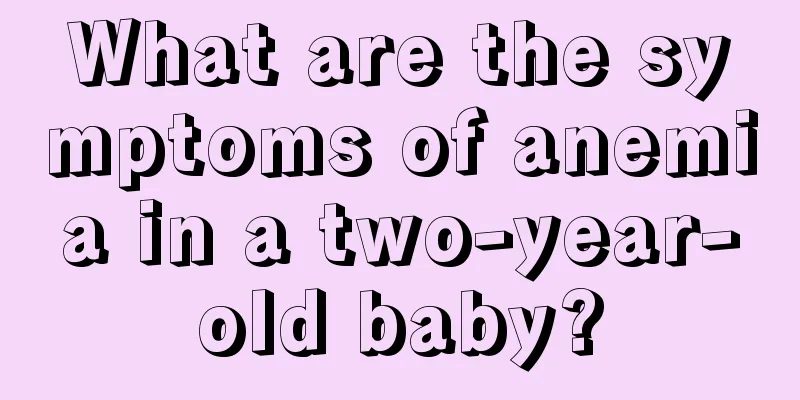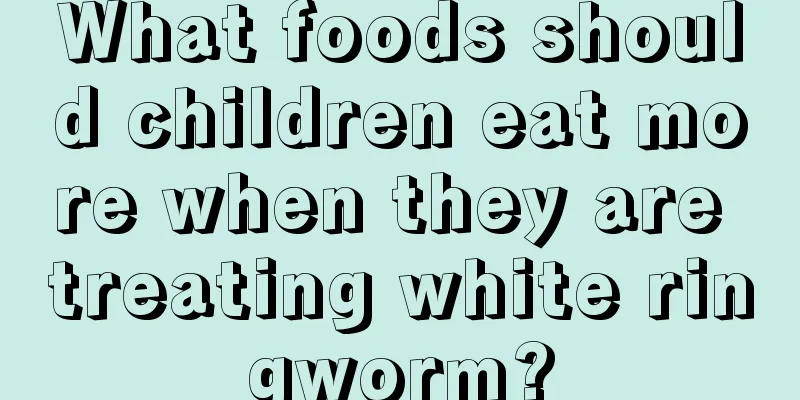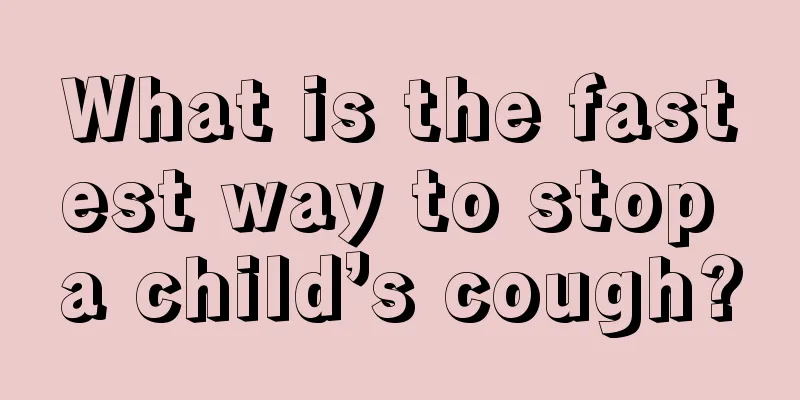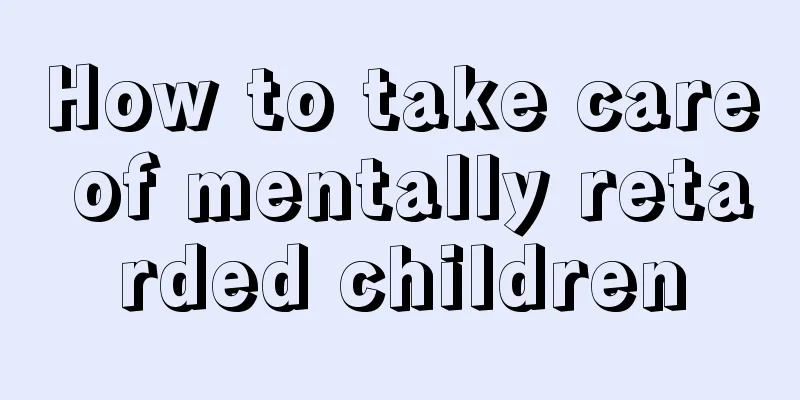What are the symptoms of anemia in a two-year-old baby?

|
Blood is essential for our body to maintain normal functioning. Once the body lacks sufficient blood, it is medically known as anemia. In life, people always think that the chance of anemia in women is much higher than that in men. The main reason is that women have menstruation every month, which causes a large amount of blood loss from the body. So the question is, what are the symptoms of anemia in a two-year-old baby? 1. Nutritional iron deficiency anemia The disease can occur at any age, but is most common between 6 months and 2 years old. The onset is relatively hidden, and many children are diagnosed only when they visit the doctor for other diseases. (1) Generally, the skin and mucous membranes gradually become pale or yellow, which is most obvious on the lips, oral mucosa and nail beds. They are prone to fatigue, irritability, crying or lack of energy, lack of activity and loss of appetite. Older children may complain of dizziness, black spots in front of their eyes, tinnitus, etc. (2) Manifestations of hematopoietic organs: Due to the extra-bone marrow hematopoietic reaction, the liver, spleen, and lymph nodes are often slightly enlarged. The younger the age, the longer the course of the disease, and the more severe the anemia, the more obvious the hepatosplenomegaly will be, but the degree of enlargement rarely exceeds moderate. The lymph nodes are mildly enlarged and tough. (3) Other symptoms and signs may include ingrown nails, inflammation of the oral mucosa and anus, and atrophy of the tongue papillae due to epithelial damage. Digestive system symptoms often include loss of appetite, pica, and sometimes indigestion, vomiting or diarrhea. Respiration and pulse rate may compensatorily accelerate, and a systolic murmur may be heard in the precordial area. Severe anemia may cause heart enlargement and even heart failure. 2. Nutritional megaloblastic anemia It is more common in infants and young children aged 6 months to 2 years. Those who are often breastfed without adding complementary foods (especially those whose mothers have been vegetarians for a long time or have vitamin absorption disorders), those who have only eaten plant-based foods for a long time, or those who have been fed with goat's milk alone. A history of chronic diarrhea, or long-term use of methotrexate, phenobarbital and other drugs. The child's skin is sallow and he or she appears puffy or has a slightly swollen face. The hair is fine, yellow and sparse. Psychoneural symptoms may occur, which are not completely parallel to the degree of anemia. People with vitamin B12 deficiency will experience neurological symptoms and signs, such as slow reaction, less crying and less laughing, and delayed or even regression in intellectual and motor development. In severe cases, they may develop organic neurological lesions, such as irregular limb tremors and ankle clonus. Folic acid deficiency does not cause neurological symptoms, but may cause neuropsychiatric abnormalities such as irritability and anger. Children often suffer from loss of appetite, nausea, diarrhea, abdominal distension, glossitis, and may also have hepatosplenomegaly. 3. Hemolytic anemia Pallor and jaundice are prominent manifestations. (1) Acute hemolysis has an abrupt onset and is often accompanied by high fever, chills, nausea, vomiting, abdominal pain, back pain, hemoglobinuria or bilirubinuria. Severe cases may cause heart failure and acute renal failure. (2) Chronic hemolysis has a slow onset, a long course, and often intermittent attacks. During the course of chronic disease, "hemolytic crisis" is often induced by factors such as infection, fatigue or emotional tension. Anemia and jaundice suddenly worsen, accompanied by fever, chills, vomiting, and significant enlargement of the spleen with pain. "Aplastic crisis" may also occur during the course of the disease, which is manifested by temporary suppression of bone marrow hematopoietic function, mainly suppression of erythroid hematopoiesis, severe anemia, bleeding, and varying degrees of decrease in white blood cell counts and platelet counts. This crisis is related to parvovirus infection and is a self-limiting process that lasts for several days or resolves in 1 to 2 weeks. |
<<: What are the symptoms of pelvic effusion in children?
>>: How to treat children who keep blinking?
Recommend
Is it okay for children to eat walnuts?
It is perfect for children to eat walnuts, becaus...
Newborn baby rash on buttocks
The skin of a newborn baby is very soft and fragi...
Precautions for children's winter care, three major health care measures
The weather is cold in winter, and health issues ...
What should I do if my newborn keeps farting?
It is a very common phenomenon for babies to fart...
Is iron deficiency anemia dangerous for children?
Many children have irregular and picky eating hab...
How to cook baby boiled shrimp
If the prawns you buy are fresh enough, the best ...
What to do if your baby's neck is red
Redness on the baby's neck is usually caused ...
What is the cause of baby's brain dysplasia?
Here, I would like to give a friendly reminder to...
What to do if your child grinds his teeth while sleeping?
If a child grinds his teeth while sleeping, paren...
What causes a runny nose in children?
From the clinical manifestations, most of the tim...
How to treat children crying at night
Nowadays, it is not uncommon to see children cryi...
What causes anemia in children?
Generally, when children have anemia, parents do ...
The child has no fever and convulsions
It is normal for children to have a cold and a fe...
Comprehensive care for premature infants at 36 weeks
Premature babies at 36 weeks are a common phenome...
Symptoms of baby's food accumulation
Food accumulation is a term in traditional Chines...









